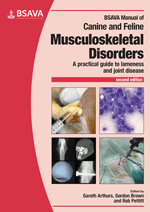
Full text loading...

Orthopaedic disorders occur more frequently than neuromuscular diseases, but when a diagnosis cannot be reached following thorough orthopaedic evaluation, disorders of muscle and the neuromuscular junction should be considered. This chapter focuses on the most commonly encountered neuromuscular disorders with particular emphasis on those that can present as lameness.
Diseases of muscle and the neuromuscular junction, Page 1 of 1
< Previous page | Next page > /docserver/preview/fulltext/10.22233/9781910443286/9781910443286.10-1.gif

Full text loading...











